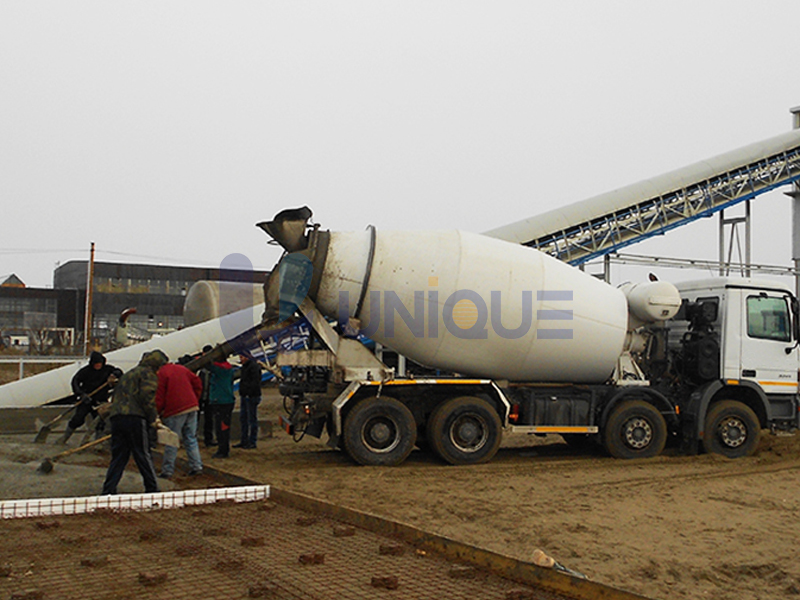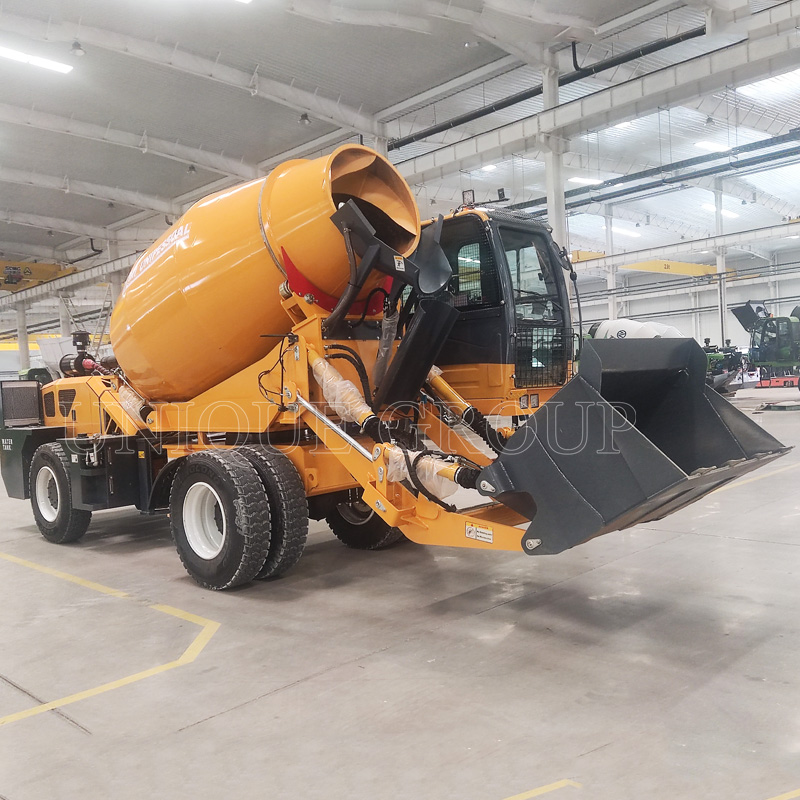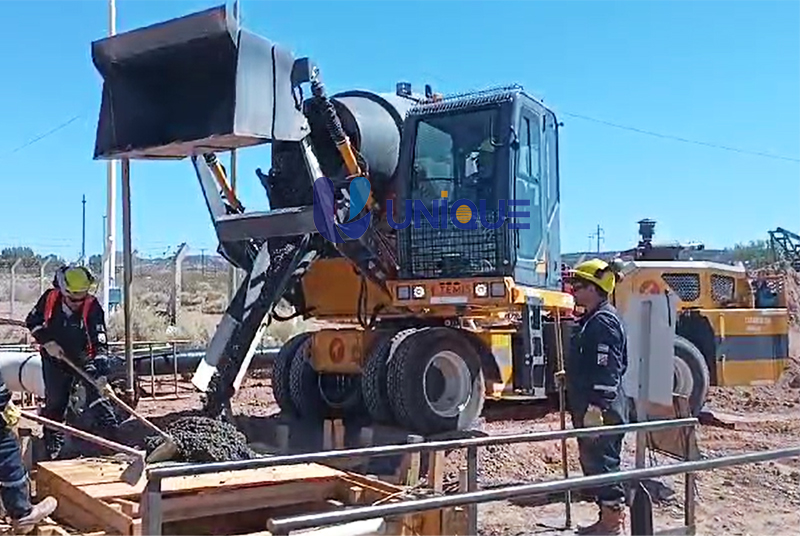What is the Difference Between a Concrete Mixer and a Cement Mixer?
2025-08-12 15:32:22Demystifying Construction Mixers: Concrete Mixer vs. Cement Mixer - What's Really the Difference?
In the bustling world of construction, the terms "concrete mixer" and "cement mixer" are frequently thrown around as if they were identical twins. Walk onto any job site or browse DIY forums, and you'll hear them used interchangeably. This common confusion, however, masks crucial differences in purpose, design, and application. Choosing the wrong equipment can lead to inefficient mixing, project delays, wasted materials, and even structural issues. Let's break down the key distinctions to ensure you select the perfect mixer for your specific needs.
1. The Foundational Difference: Cement vs. Concrete
Before we dive into the machines, it's essential to clarify the core materials involved, as this is the root of the mixer confusion:
-
Cement: This is a fine, powdery substance, most commonly Portland cement. It acts purely as the binding agent. When mixed with water, it undergoes a chemical reaction (hydration) that causes it to harden and gain strength. Cement is never used alone as a structural material.
-
Concrete: This is the robust, versatile composite material used in countless structural applications. It consists of cement, water, aggregates (like sand, gravel, or crushed stone), and often includes additives (such as fly ash or chemical admixtures) to enhance specific properties like workability, setting time, or durability. The aggregates provide the bulk and strength.
In essence: Cement is an ingredient. Concrete is the finished product. This fundamental difference directly dictates the design of the mixers used to handle them.
2. What is a Cement Mixer? (Technically, a Mortar Mixer)
Despite the widespread use of the term "cement mixer," this machine is more accurately called a mortar mixer. Its primary function is to blend cement, sand, and water into a uniform paste known as mortar.
Key Features of a Mortar (Cement) Mixer:
-
Smaller Capacity: Typically ranges from 1 to 5 cubic feet, suitable for batches used in bricklaying or plastering.
-
Mixing Mechanism: Often features a tilting drum or uses rotating paddles within a stationary tub. This design ensures thorough blending of the fine powders (cement and sand) with water into a smooth, consistent paste.
-
Aggregate Handling: Designed only for fine aggregates like sand. It cannot effectively mix large stones or gravel.
-
Mobility: Generally portable, often on wheels, for easy movement around a job site.
Common Applications of a Mortar Mixer:
-
Bricklaying and blockwork (binding masonry units)
-
Applying plaster or stucco finishes
-
Mixing tile adhesives or thin-set mortar
-
Small repair jobs involving mortar
3. What is a Concrete Mixer?
The concrete mixer is the heavyweight champion designed specifically to combine cement, water, and coarse aggregates (gravel, crushed stone) along with fine aggregates (sand) to produce ready-to-use structural concrete.
Key Features of a Concrete Mixer:
-
Larger Capacity: Portable models start around 5 cubic feet (suitable for DIY and small slabs), while professional site mixers are larger. The giants are truck-mounted transit mixers, capable of holding 8 to 12 cubic yards of concrete.
-
Mixing Mechanism: Primarily features a rotating drum with internal blades or fins. As the drum turns, these blades lift the mixture and cause it to tumble, ensuring the heavy aggregates are uniformly distributed and coated with the cement paste without segregating. Pan mixers are also used, especially for stiffer mixes or precast concrete, employing rotating stars or blades within a stationary pan.
-
Aggregate Handling: Specifically engineered to handle the abrasive nature and varying sizes of coarse aggregates like gravel and crushed rock.
-
Mobility: Ranges from highly portable wheelbarrow-style mixers to truck-mounted transit mixers that deliver ready-mix concrete.
Common Applications of a Concrete Mixer:
-
Pouring foundations, footings, and slabs
-
Constructing driveways, sidewalks, and patios
-
Building structural walls, columns, and beams
-
Creating precast concrete elements (steps, lintels, panels)
-
Any project requiring structural-grade concrete
4. Key Differences Summarized: Cement Mixer vs. Concrete Mixer
| Feature | Cement Mixer (Mortar Mixer) | Concrete Mixer |
|---|---|---|
| Primary Use | Mixes Mortar (Cement + Sand + Water) | Mixes Concrete (Cmt + Aggregates + Water) |
| Capacity | Small (Typically 1-5 cu ft) | Large (5+ cu ft portable; Truck: 8-12 cu yd) |
| Mixing Method | Tilting Drum or Paddle Mixer | Rotating Drum with Blades or Pan Mixer |
| Aggregates | Handles Fine Sand ONLY (No large stones) | Designed for Gravel, Crushed Rock, Sand |
| Output | Smooth Paste (Mortar) | Structural Material (Concrete) |
| Typical Jobs | Bricklaying, Plastering, Tiling | Foundations, Slabs, Driveways, Structures |
5. Choosing the Right Mixer: Mortar or Concrete?
Selecting the correct equipment is vital for efficiency and quality:
-
Choose a Mortar Mixer (Cement Mixer) If:
-
Your project involves bricklaying, blockwork, plastering, stucco application, or tile setting.
-
You only need to mix mortar (cement + sand).
-
You require smaller, more manageable batches.
-
Portability and ease of cleaning for fine materials are priorities.
-
-
Choose a Concrete Mixer If:
-
Your project involves pouring foundations, slabs, footings, driveways, sidewalks, or structural elements.
-
You need to mix true concrete containing gravel or crushed stone.
-
You require larger batch volumes, even with portable models.
-
You need equipment designed to handle the abrasion and mixing force required for coarse aggregates.
-
6. Industry Trends and Innovations
Mixer technology continues to evolve, enhancing efficiency and sustainability:
-
Automated & Self-Loading Mixers: Increasingly popular for reducing labor intensity. These mixers can often load their own raw materials (sand, aggregate, cement, water) on-site, significantly streamlining the process, especially for smaller contractors or remote locations.
-
Eco-Friendly Drivetrains: The rise of electric concrete mixers (both battery-powered and corded) and hybrid models is reducing emissions and noise pollution on job sites, aligning with greener construction practices. This is particularly impactful for indoor projects or urban environments.
-
IoT Integration & Smart Mixing: Advanced sensors embedded in mixers (IoT - Internet of Things) can monitor mix consistency, temperature, hydration levels, and drum rotation speed in real-time. This data ensures optimal mix quality, reduces waste from incorrect batches, and allows for remote monitoring.
Conclusion: Precision in Terminology Equals Precision in Construction
While the term "cement mixer" has become deeply ingrained in everyday language, it technically refers to a machine designed for mixing mortar – a blend of cement, sand, and water. The concrete mixer, in contrast, is the robust workhorse engineered to combine cement, water, sand, and crucially, coarse aggregates to produce structural concrete.
Understanding this distinction is far more than semantics; it's fundamental to construction efficiency, cost-effectiveness, and project success. Using a mortar mixer for concrete will result in poorly mixed, weak material incapable of handling structural loads. Conversely, using a large concrete mixer for small mortar jobs is inefficient and difficult to clean thoroughly. By selecting the right mixer – mortar mixer for binding pastes, concrete mixer for structural mixes – you ensure optimal material performance, maximize productivity, and build with confidence. Clarity in terminology leads to clarity in execution on the construction site.
PRODUCT TYPE LIST
NEWS
Contact Us
Address:Industrial Equipment Zone,Zhengshang Road Zhengzhou Henan
Zip: 450000 China
Fax:+86-371-63935058
E-mail:sales@unique-cons.com
TEL:+86-371-63699132









